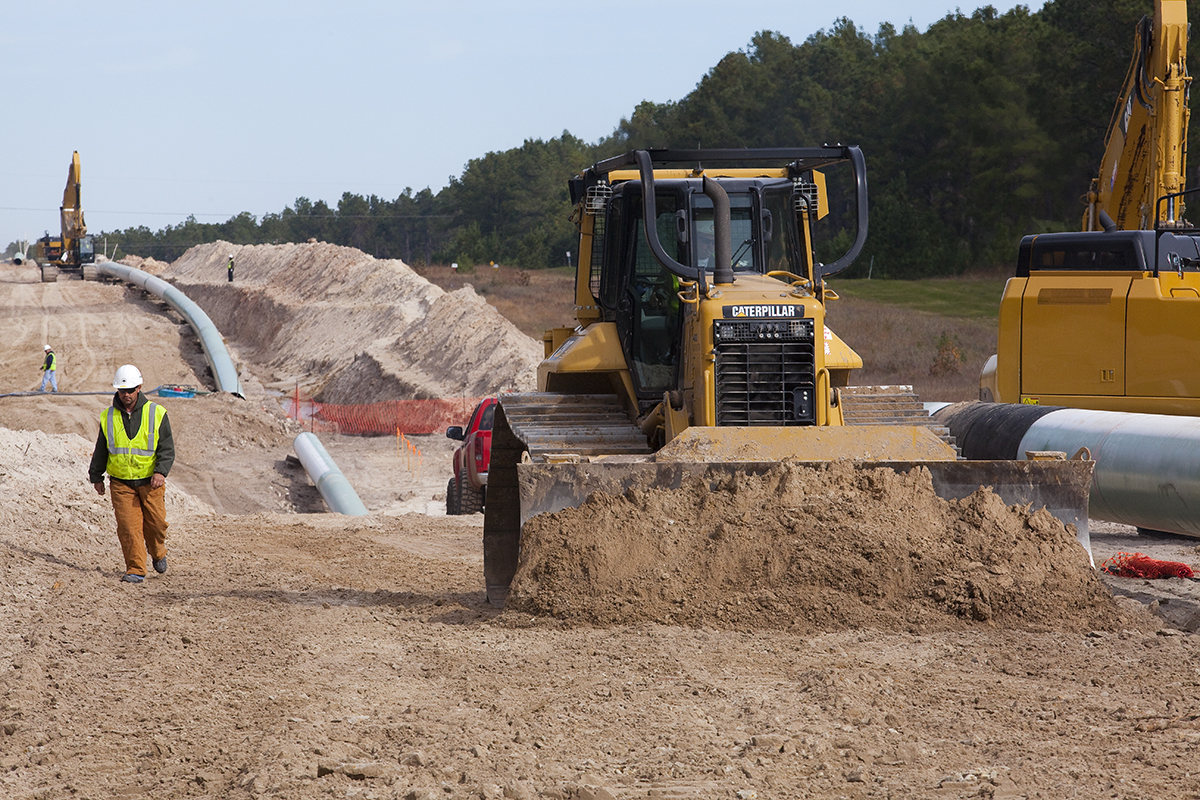March 2013, Vol. 240, No. 3
Features
TransCanadas Gulf Coast Project Halfway Home; Service Expected This Year

Work on the 485-mile Gulf Coast Project pipeline has already progressed past the halfway point on all three of its spreads with TransCanada expecting the 36-inch pipe to be in service by the end of the year.
Stretching from the Cushing hub to South Texas, construction on the line, which will include a 47-mile lateral to Houston-area refineries, kicked off Aug. 9 near Livingston, TX. Initially, the pipeline will have a capacity of 700,000 bbl/d of U.S. domestic light sweet crude from West Texas and Oklahoma. After the Keystone XL is completed all the way from Hardisty, Alberta, to Cushing, the pipeline will also receive heavy crude and be expandable to 830,000 bbl/d.
It is the shipping of this heavy crude – also called diluted bitumen – that has garnered the most media attention, and some protests from environmentalists. Still, work at the project’s sites, which will employ as many as 4,000 people at its peak, has moved along at a steady clip.
“The protests have not had a significant impact on our schedule. We have lost far more time to rain than protests,” said David Dodson, TransCanada’s spokesman for Gulf Coast Project. “It’s a large project spanning hundreds of miles. We may lose a single piece of equipment for a few hours, but there is plenty of other work for crews to do.”
TransCanada has employed its traditional community investment programs along the route and conducted the company’s usual outreach to stakeholders in government and civic organizations to explain the project as it progressed. Dodson attributed much of the project’s success to “good communication, good planning, experienced management, foremen and crews.”
Completing the $2.3 billion Gulf Coast Project involves the installation of six pump stations initially, three each in Oklahoma and Texas, and entails several horizontal drills and bores. The erosion-control measures along the route, which traverses wetlands in southeast part of Texas, will involve standard trench plugs and hay bales.
On the permitting front, things have gone smoothly. In fact, Dodson said the most significant challenge has been getting the U.S. Fish and Wildlife Service to sign off on the company’s mitigation plan for the American burying beetle, a regulatory criteria he said TransCanada has met.
In January, Nebraska Gov. Dave Heineman approved the re-routing of the Keystone XL through the state, under a plan that bypasses the environmental-sensitive Nebraska Sandhills. His decision came following his review of the final evaluation report from the state’s Department of Environmental Quality, which found the new route would have “minimal environmental impacts” on the state.
“The need for Keystone XL continues to grow stronger as North American oil production increases and having the right infrastructure in place is critical to meet the goal of reducing dependence on foreign oil.” TransCanada CEO and President Russ Girling said. “Keystone XL is the most studied cross-border pipeline ever proposed, and it remains in America’s national interests to approve a pipeline that will have a minimal impact on the environment.”
Meanwhile, the company has re-applied for U.S. approval of the line’s northern leg; a presidential decision on the new application is expected soon.





Comments